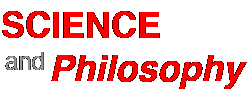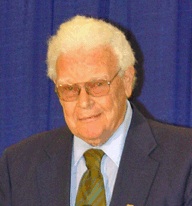Reading on: The end of physical determinism
Matson, Floyd W. The Broken Image, George Braziler, New York 1964 [abridged— 1700 words] [abstract— 180 words] — the end of absolute time, space and matter
During the three hundred years in which the worldview of Newtonian physics dominated the stage of Western thought, there were always voices of dissent… In various fields of thought the reign of mechanism was successively challenged by competing visions—such as those of vitalism, romanticism and idealism—all more or less reflecting, despite their other differences, what William James was to call the “tender-minded” (as opposed to the “tough-minded”) attitude toward the meaning of experience and reality.
After the seventeenth century, however, these humanist alarms and excursions proved more and more ineffectual in slowing the march of the mechanistic philosophy toward the hubris of an all-embracing and all-sufficient scientism... To oppose the prevailing cosmology was simply to be against “science”; and to be against science was to stand squarely in the path of truth and progress…
But in the twentieth century, for the first time, the image of the universe as a great machine came under direct attack by science itself—and not merely by a scattering of isolated researchers but by the full mainstream of theoretical and experimental physics.
The Decline
of Mechanism
What has since come to be known as the revolution in modern science
reached its climax in the nineteen-twenties and thirties in the
field of quantum physics; but its preliminary engagements had been
fought and won half a century earlier. Even before that, the Laplacean
ideal of absolute certainty had been disturbed by the development
of thermodynamics, with its reliance upon probability. But the first
substantial indication of a crack in the mechanical model appeared
in the final quarter of the century in the wake of those exhaustive
investigations into electricity and magnetism through which, for
upwards of a hundred years, prodigies of scientific ingenuity had
been expended in a futile effort to fit these refractory phenomena
into the framework of classical mechanics. “The great change
was brought about,” as Einstein has noted, “by Faraday,
Maxwell and Hertz—as a matter of fact half unconsciously and
against their will.”
In 1873, proceeding from the ordained mechanical premises, Clerk Maxwell ended up with a set of equations (the electromagnetic theory) which clearly repudiated those premises and cast doubt upon the entire foundation of Newtonian mechanics. Even then, many leading physicists rejected Maxwell’s conclusions because they could not be rendered visible and substantial in terms of a mechanical model. It was only after decades had passed that the radical implications of Maxwell’s theory were fully assimilated by his scientific colleagues, for whom the ideal of mechanism had been too long an unquestioned article of faith…
The success of the electromagnetic theory was significant not only as the first breach in the great wall of mechanism, but also as a premonitory clue to what might be termed the “postmodern” conception of the nature of scientific knowledge. Previously it had been assumed by the faithful that the descriptions of which science was capable encompassed the whole of knowable reality—in other words, that what escaped the net of the scientific mechanist either did not exist or was not worth knowing. Indeed, scientific explanation not merely ordered and described the objects of its concern but penetrated to their very essence…
Through its methods of mechanical reduction and mathematical reproduction, as well as by its postulate of neutral objectivity, modern science sought for (and was on the way to finding) not a limited aspect of reality but the whole truth and nothing but the truth. It was this passionate quest for certainty, this unqualified faith in the power of “Natural Magick” to expose and explain the deepest secrets of the universe, which principally characterized the creed of scientism and constituted its peculiar hubris.
And it was this fundamentalist faith which was profoundly shaken, if not yet overturned, by the failure of the mechanistic assumptions to account for the nature of electricity, and by the incontrovertible success of Maxwell’s effort to comprehend the mystery in terms basically alien to the Newtonian perspective. As a result of Maxwell’s equations, as the mathematician Sullivan has put it, “All that we knew about electricity was the way it affected our measuring instruments… The precise description of this behaviour gave us the mathematical specification of electricity and this, in truth, was all we knew about it.” The significance of this departure from the standard procedure and expectation of classical mechanics dawned slowly upon the world of science.
Natural scientists were understandably reluctant to modify a framework which had proved so continuously fruitful both in theory and practice; and not only natural scientists but social and political scientists as well were unwilling—and in substantial numbers remain unwilling today—to abandon a worldview which, at whatever the price to human dignity and moral freedom, had brought determinate order and the illusion of certainty to the once-mysterious universe.
Writing more than half a century after Maxwell’s discovery, Sullivan drew the moral of his achievement: “It is only now, in retrospect, that we can see how significant a step this was… It has become evident that, so far as the science of physics is concerned, we do not require to know the entities we discuss, but only their mathematical structure. And, in truth, that is all we do know. It is now realized that this is all the scientific knowledge we have even of the familiar Newtonian entities. Our persuasion that we knew them in some exceptionally intimate manner was an illusion.”…
“The progress of science,” declared Whitehead in 1925, “has now reached a turning point. The stable foundations of physics have broken up… The old foundations of scientific thought are becoming unintelligible. Time, space, matter, material, ether, electricity, mechanism, organism, configuration, structure, pattern, function, all require reinterpretation.”…
It was not
only that physicists no longer knew what they meant by mechanics;
in more and more corners of their field, they were ceasing to think
at all in mechanical terms… “Our modern minds have, I
think,” remarked Jeans, “a bias towards mechanical interpretations.
Part may be due to our early scientific training; part perhaps to
our continually seeing everyday objects behaving in a mechanical
way, so that a mechanical explanation looks natural and is easily
comprehended.” …
After the full impact of relativity had been felt, however, little
was left of this ingenuous belief in the scientific image of objective
reality, as faithfully registered by the senses. It began to be
recognized that the familiar picture, far from being a genuine photographic
reproduction of an independent reality “out there,” was
rather more on the order of a painting: a subjective creation of
the mind, which could convey a “likeness” but could never
produce a replica…
And Sir James Jeans… felt safe in declaring: “Today there is a wide measure of agreement which on the physical side of science approaches almost to unanimity, that the stream of knowledge is heading towards a non-mechanical reality; the universe begins to look more like a great thought than like a great machine…”
There is a further consideration bearing on the uncertainty principle which deserves comment. It is often asserted that the element of ambiguity which quantum physics has exposed in the fundamental operations of nature, whatever its significance may be within this miniature world, does not affect our observation of events in the macroscopic world of everyday affairs. The conventional procedures of classical mechanics, in this view, remain as accurate as ever for “large-scale” happenings in which vast numbers of particles are involved. In a limited and strictly practical sense this supposition is perhaps unobjectionable; but if it is taken to mean that the structure of Newtonian law embracing the visible world has remained unaffected by the quantum revolution, it is seriously misleading. For while it is true that for ordinary purposes the traditional procedures are still “pragmatically” valid—i.e., adequate for the measurements which we normally undertake—it is no less true that the principles which formerly supported them are in shambles. The new and very different laws which have been discovered in the realm of quanta do not “stop at the atom’s edge”; if they may be generally disregarded on the macrophysical level it is not because this territory is beyond their jurisdiction but only because our sensory and mechanical equipment is too gross to detect their presence. The quanta are however there.
What is no longer “there” is the mechanistic assumption of clockwork certainty which underlay the Newtonian cosmology and was so aptly embodied in Laplace’s demon. Where once it could be assumed as an article of faith that perfect precision and infallible prediction were in principle within the power of science—and, accordingly, that any inexactness in our findings was only a temporary and technical impediment—today it is all but universally acknowledged that the data of classical physics are at best approximations (“limiting cases” of the quantum theory) doomed forever to an irreducible imprecision not merely in practice but in principle as well.
The difference which this makes in the outlook of science, and perhaps not only of science, is considerable. The dogmatic determinism of the scientific mechanist was as rigorous as it as all-embracing; it countenanced no loose talk of capriciousness or chance in any corner of the universe…
Indeed, although the principle of uncertainty has reference to very small particles and events, it does not at all follow, as Bronowski has seen, that these events are of small importance. “They are just the sorts of events which go on in the nerves and the brain and in the giant molecules which determine the qualities we inherit. And sometimes the odd small events add up to a fantastic large one.” [Ed: as in the mutations in the genetic code]
It may be enough to underscore the broadest and most reliable inference for the humane sciences which has thus far emerged from the physical revolution of our century: that as the mechanistic viewpoint has been found to be inadequate for the full comprehension of inorganic matter and natural events, it is inadequate for the understanding of human nature and human events; and, more specifically, that the assumption of objective predeterminism upon which all consistent causal analysis (with its corollaries of exact prediction and control) must finally depend is, in simple fact, without confirmation in the new physics of possibility.


